This article has been reviewed according to Science X's editorial process and policies. Editors have highlighted the following attributes while ensuring the content's credibility:
fact-checked
reputable news agency
proofread
Bottomless supply? Concerns of limited Canadian hydropower as U.S. seeks to decarbonize grid
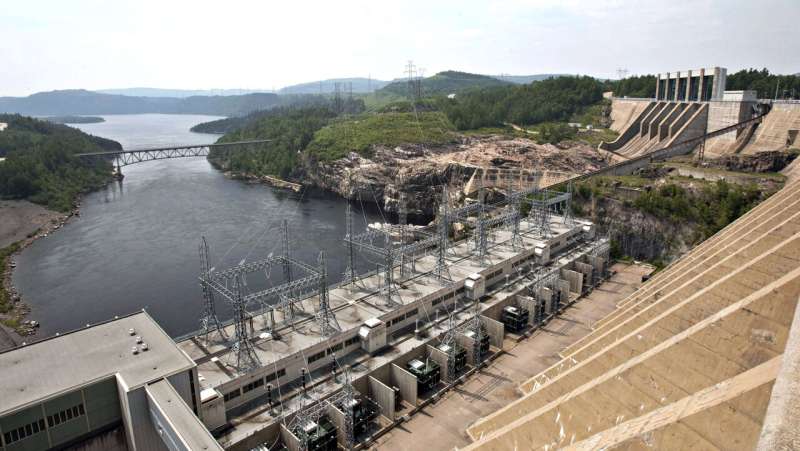
Policymakers seeking to make the U.S. electric grid less reliant on fossil fuels have long looked north to Canada and its abundant surplus of hydropower, advocating for new transmission lines to bring more of that cheap, clean electricity south.
But with demand for green energy growing north of the border, too, there are new concerns that Canada's hydro supply isn't as bottomless as it once seemed.
A study published in May by the Montreal Economic Institute predicted that Quebec, now home to one of the world's largest hydroelectric systems, will over the next decade fall short of the generating capacity needed to meet increasing demand for power in the province.
Some New England lawmakers are questioning the wisdom of plans to construct new transmission lines across their states, despite Canadian energy giant Hydro-Québec's insistence it can still meet its energy obligations.
"They have their own energy needs," Maine state Sen. Nicole Grohoski said of the Canadians. The Democrat said it is "overly optimistic" for policymakers to rely on Canadian hydropower. "There are industrial users up there that are already having issues and they're not interested in investing in Quebec because they're worried about power supply."
Over decades, Hydro-Québec, which is owned by the Province of Quebec, has built a series of hydro-electric facilities, most in the northern reaches of the province. The dams' construction and the subsequent flooding of areas behind them has drawn protests from indigenous groups and environmentalists on both sides of the border.
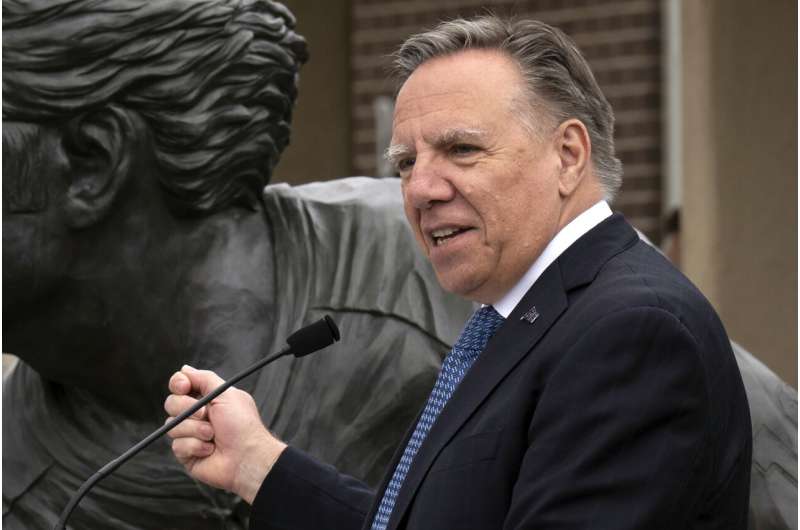
But in the process Hydro-Québec has become the largest producer of renewable energy in North America. It produces nearly half of all Canadian hydropower as well as a smaller number of wind and other renewable projects.
The capacity to generate electricity left the utility with extra power to sell in the energy-hungry U.S. There are already a number of transmission lines that carry power from Canada to the United States and more on the drawing board.
A line from the border down Lake Champlain and the Hudson River to New York City is under construction. Authorities in Maine just gave approval to resume construction of a separate line from the border to Massachusetts.
There are also pending proposals for lines to reach southern New England through Vermont and New Hampshire.
Connecticut Gov. Ned Lamont, a Democrat, has been rallying his fellow New England governors to seek federal funding for transmission line projects. The push comes as billions of dollars are available for electric transmission line projects under President Joe Biden's infrastructure law.
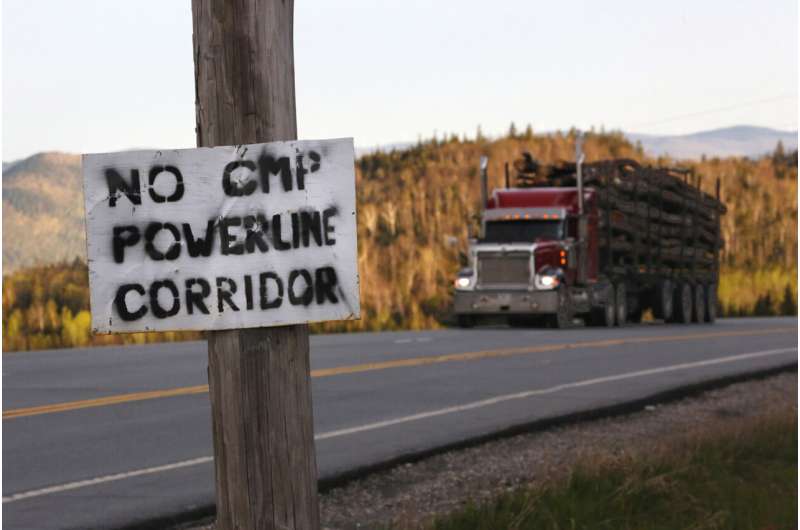
"We've got to speed things up when it comes to reliability and reserves and more carbon-free power," Lamont said.
But Quebec is on its own quest to reduce use of planet-warming fuels. The province is hoping to achieve carbon neutrality by 2050, while demand for hydropower is predicted to grow 14% over the next decade.
"No province now is in a position where they see huge surpluses of electricity that would be available for exports," said Pierre-Oliver Pineau, an expert on Canadian energy policy and professor at HEC Montréal, the University of Montreal business school.
A bipartisan group of lawmakers from Maine who oppose the proposed 145-mile (233-kilometer) New England Clean Energy Connect transmission line recently asked the governor of Massachusetts to review whether Hydro-Québec can still meet its energy obligations.
They also sent a letter to Quebec Premier François Legault questioning whether there will be enough electricity to power both that line and the Champlain-Hudson Power Express line, which is currently under construction. That line is intended to provide New York City with 20% of its power needs.
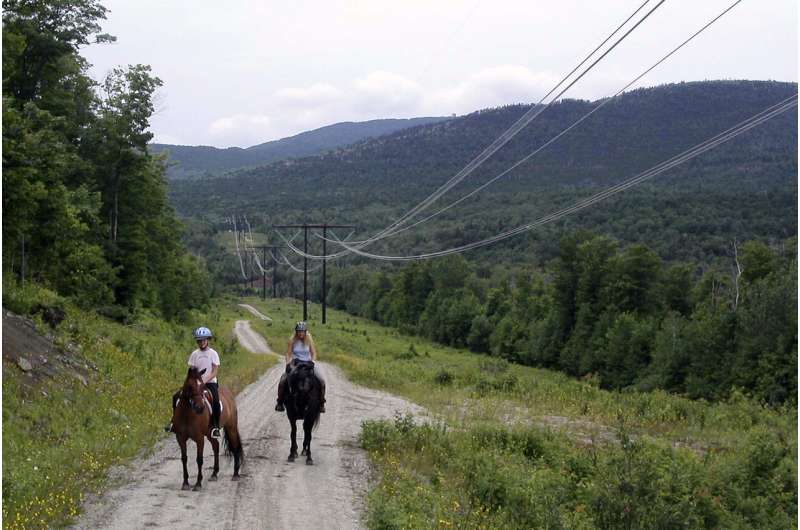
The Maine lawmakers said they worry new dams might need to be built, a process that could take years.
"Many people in New England have lived with a myth that Quebec has so much power that it doesn't know what to do with it all," the legislators said in a joint statement.
Local news has reported Jean-Hugues Lafleur, Hydro-Québec's financial officer, said during an analyst call last month that the company could meet the energy demand when it signed the contract in 2018 and that "we still have enough energy to supply the New England region."
Connecticut's Department of Energy and Environmental Protection Commissioner Katie Dykes said hydropower is just one piece of the puzzle and that the New England states are also working together to decarbonize the electric system through other means, including offshore wind.
Hydro-Québec, meanwhile, has also expressed interest in transmission lines capable of moving power in both directions. Developers of the proposed 1,000-megawatt transmission line known as New England Clean Power Link, which would run from Quebec to southern New England through Vermont, are working to modify its approval to turn it into a bi-directional line.
-
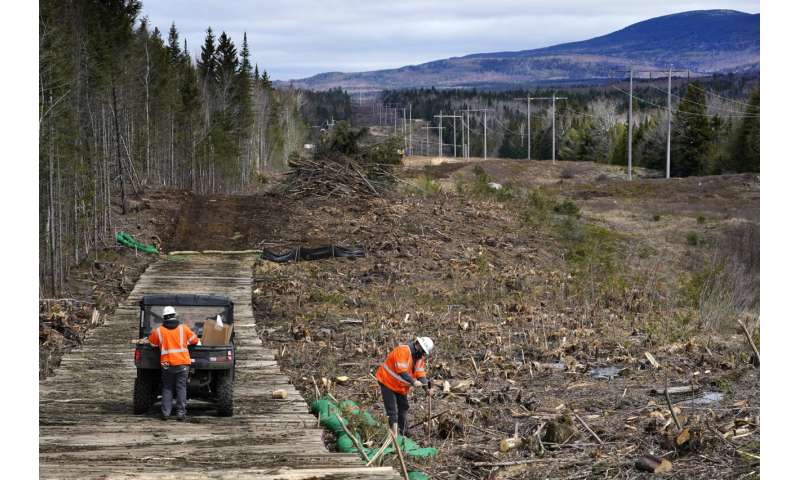
Workers for Northern Clearing pound stakes to mark land on an existing Central Maine Power power line corridor that has been recently widened to make way for new utility poles, near Bingham, Maine, April 26, 2021. The Maine Department of Environmental Protection announced that construction of a transmission line could resume after state voters opposed the project in an election. Credit: AP Photo/Robert F. Bukaty, File -
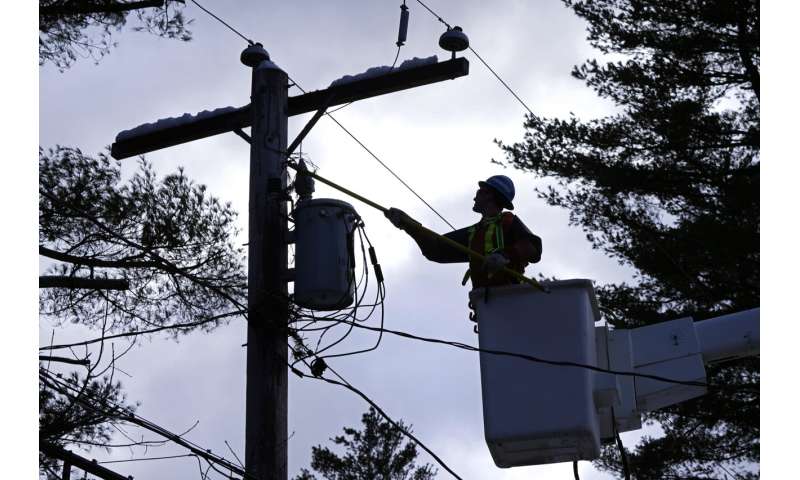
Lineman Tyler Hunter, of Newmarket, Ontario, Canada, clears pine tree limbs from electric lines in a neighborhood of about 70 houses without power, March 15, 2023, in Windham, N.H. The state of New Hampshire has highlighted a new entrant into the northeast transmission mix by announcing plans for a 211-mile, 1,200 megawatt power line that would enter the United States at Canaan, Vermont, and follow a buried route south along a state highway until it crossed into New Hampshire where it would hook up to an existing power right-of-way. Credit: AP Photo/Charles Krupa, File
"This modification would allow the line to be used as originally intended to move hydropower from Canada to New England, while also allowing the line to move loads such as off-shore wind generation from New England to Canada for storage and later use, which could materially help winter reliability in the region," said June Tierney, the commissioner of the Vermont Department of Public Service.
Last month, the state of New Hampshire highlighted a new entrant into the northeast transmission mix by announcing plans for a 211-mile, 1,200-megawatt power line that would enter the United States at Canaan, Vermont, and follow a buried route south. If built, the $2 billion proposal would also be a bi-directional line.
"This project is also not dependent solely on hydropower—it would have the ability to deliver other forms of clean energy being generated in Canada—such as wind and solar power—to New England," said a statement from the utility National Grid, which is proposing the line.
Kerrick Johnson, chief innovation and communication officer for the Vermont Electric Power Cooperative, which manages the state's electric transmission system, said there's a transformation underway of the electric production and distribution system across the world and including the Northeastern United States and eastern Canada.
"This is a new chapter in the shared-energy history of North America," he said.
© 2023 The Associated Press. All rights reserved. This material may not be published, broadcast, rewritten or redistributed without permission.



















